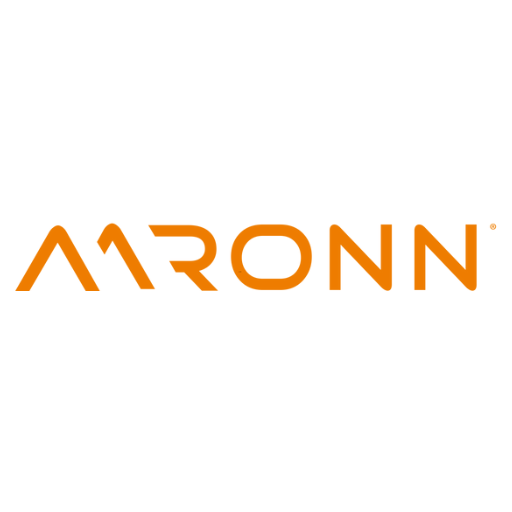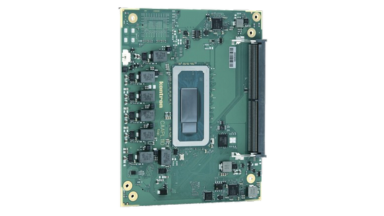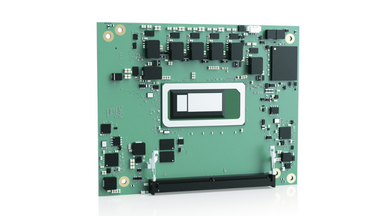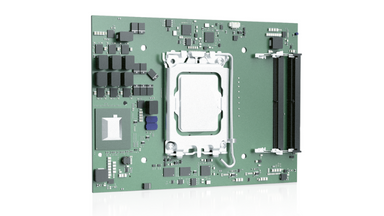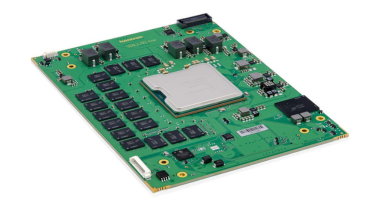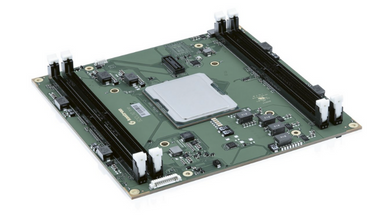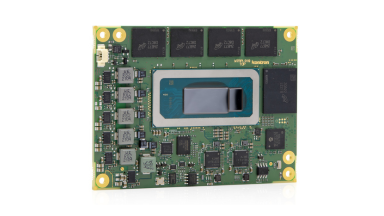COM HPC makes Embedded Systems Ready for Digitization
Source: Kontron
COM HPC Overview

COM-HPC/Client is designed for use in high-end embedded client products that require one or more displays, with low-, medium-, and very high-bandwidth I/O, powerful CPUs, and small size.
COM-HPC/Server covers the requirements when used in high-end headless (non-display) embedded servers that require high CPU capacity, large memory capacity, and many high-bandwidth I/O options – up to multiple 10 Gbps or 25 Gbps Ethernet ports and 65 PCIe lanes with speeds up to PCIe Gen 5.
COM-HPC/Mini with dimensions of 95 mm x 70 mm extends the COM-HPC standard to a more compact format. It offers a high-speed connector with 400 pins, supports two 10 GbE interfaces, 16x PCIe lanes up to PCIe Gen5 and 4 USB 4 interfaces, including Thunderbolt and DisplayPort Alternate Mode.
COM HPC continues the Evolution of COM Express

Developers can thus have carrier boards that include all the necessary subsystems, but rely on COM-HPC boards for the essential computing tasks and main memory, which they can obtain from a wide range of manufacturers. As has proved to be the case in the COM success story to date, COM HPC boards can be easily exchanged for higher-performance COM HPC models later, when more powerful processors and memory modules are available.
COM HPC is therefore continuing the successful COM development and is also utilizing the proven market mechanisms. As in the past, system integrators will continue to play an essential role in selection and individual customization. Perhaps they will become even more important, at least in the transition phase, as they can help customers to exploit the new possibilities quickly and efficiently.
Despite the significant improvements, COM HPC will not replace the current technologies, especially COM Express Type 6, 7 and 10, overnight. The latter will have its justification in many application scenarios for years to come. However, many new applications in the automotive sector, in telecommunications or in industry will only be possible thanks to the greater data rate and performance of COM HPC.
Product Highlights
Whitepapers
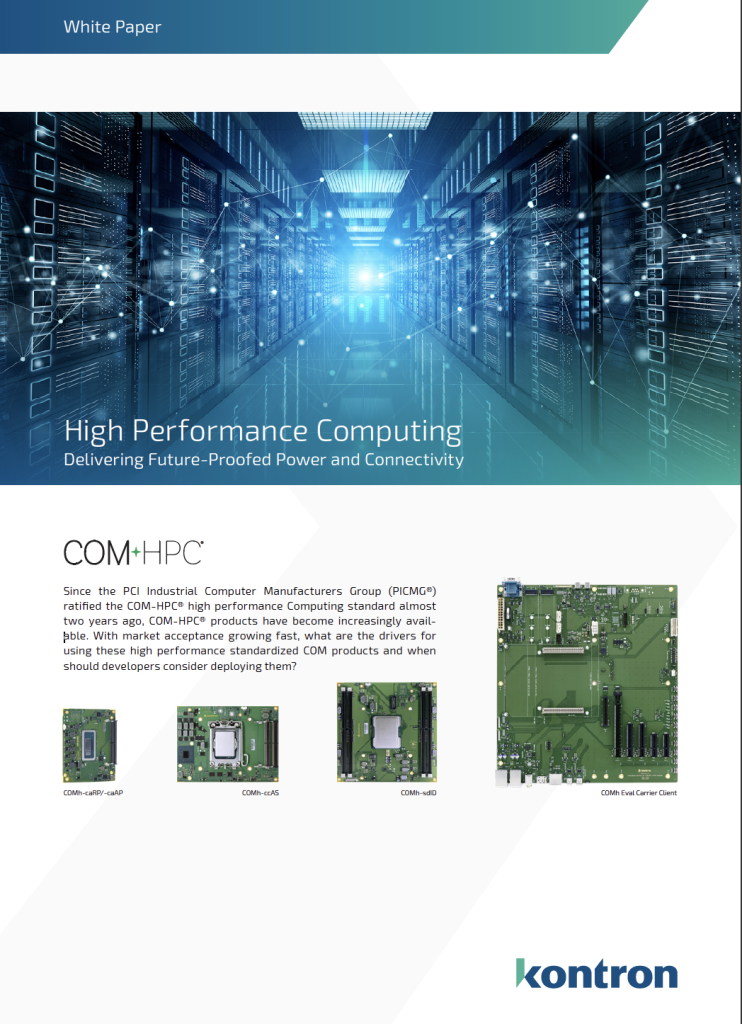
WHITEPAPER: The new Standard COM-HPC® – Delivering future proofed power and connectivity
In response to the growing high performance computing requirements and to ensure Computer-on-Modules remain fit-for-purpose long into the future, a new High Performance Computing standard for Modules has been defined by the PICMG: COM-HPC®. This enables more powerful COMs that extend beyond the limits and capabilities of COM Express® (Type 6 and 7) and other COM standards. While complementary, COM-HPC® is distinct from COM Express®, directly supporting the growing need for more powerful future-proofed compute, scalability, transmission, and network performance. (Quelle: Kontron)
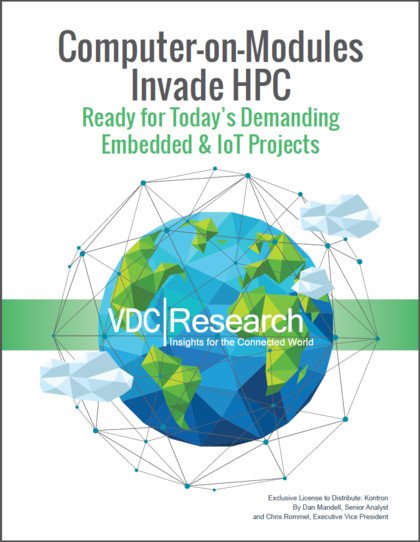
WHITEPAPER: Computer-On-Module Invade HPC
A range of industry applications face escalating demand for high-performance embedded computing. More specifically, this growing demand is for solutions built on standard hardware form factors with low power consumption and modularity in mind. At the same time, compact and efficient computer-on-modules (COMs) have evolved to support some of the most sophisticated embedded processors to manage heavier workloads than previously possible using the form factor. This cross section of modern high-performance embedded computing requirements coupled with a maturing COMs technology and supplier landscape is fueling its expansion into a variety of relatively new product designs and applications. (Quelle: Kontron S&T AG)
